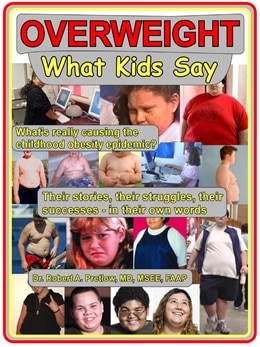
This current series looks at the costs of obesity to society as a whole, and many readers may experience surprise as instances and examples of harmful influence are revealed. One certainty cannot be repeated too often, and that is the unavoidable fact that childhood obesity affects all children — if not directly, then indirectly.
Our kids, no matter what shape they are in now, may grow into obese adults. Even if they do not personally share that fate, the society they live in for the rest of their lives will certainly be lavishly populated with obese adults. This fact will be reflected in the taxes they pay, as well as in many other aspects of their lives.
Many government departments are concerned about reducing the expenses that society is expected to cover, and in numerous cases, these bureaucracies can actually do something about the conditions that cause those expenses to mount.
As we have seen, adequate hydration is one of the conditions that can go some distance toward alleviating widespread obesity. The National Institutes of Health naturally want to know how workplaces, homes, and schools can be helped to maintain standards that will cause less obesity and less illness, and fewer injuries and thus, less expense to the national budget.
Consequently, that agency paid attention to a publication describing WHPPs, or workplace health promotion programs. Any WHPP that the government comes up with is intended to improve citizens’ lifestyles and consequently their health, and furthermore the prosperity and well-being of the businesses where they earn their salaries.
Every such program ever initiated has been launched with the purpose of promoting physical and mental health. By aiming to promote physical activity, such programs hope to increase workplace productivity and, ultimately, to reduce the number of sick days claimed by the workers. Furthermore, a well-designed WHPP can improve “employee productivity, working energy, and job satisfaction, as well as decrease absenteeism, enhance a sense of community, health behaviors, and overall well-being.”
That is a tall order, but the designers of these programs are quite serious and dedicated to their goals. The hope, always, is that employees who benefit from these well-intentioned programs will speak generously of them to other workers, thus making further adoption of the ideas frictionless.
When someone does not drink enough water, the body is aware of being deprived of something important, and may react by malfunctioning in ways that no employer wants to see — like changes in attitude and consciousness that can lead to expensive mistakes or counter-productive hostility, or even to internal conditions that foster actual physical illness.
The changes in people’s knowledge, attitudes, and expectations may be minor, and yet still exert significant influence on their capabilities and moods, and meaningfully impact the work environment’s overall emotional and cognitive weather. All in all,
Adequate water intake is a low-cost and effectively non-invasive strategy for individual health outcomes… Besides significantly increasing water intake, the intervention improved other health behaviors, thereby benefiting physical and mental health. Hence, promoting water consumption in workplaces till it becomes a habit may benefit the employees.
Your responses and feedback are welcome!
Source: “Effectiveness of a Water Intake Program at the Workplace in Physical and Mental Health Outcomes,” NIH.gov, 2022
Image by daha3131053/Pixabay

 FAQs and Media Requests:
FAQs and Media Requests: 











